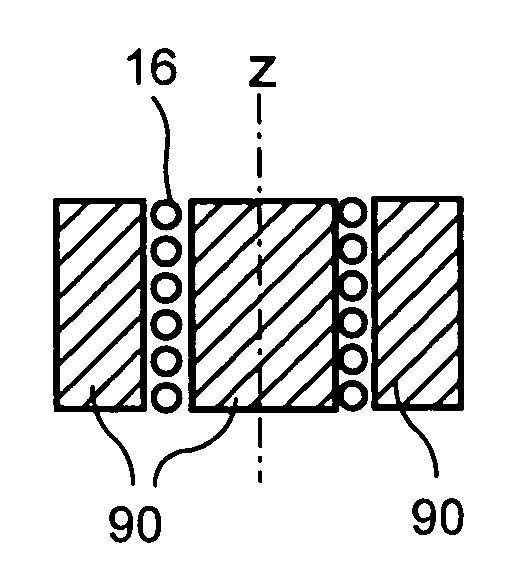Method and apparatus for precision working of material
a material and laser technology, applied in the field of material precision working, can solve the problems of unsatisfactory refractive, unsuitable for very fine cut shapes, and not optimal for the above-described application of precision cutting, and achieve the effects of lowering the repetition rate of pulsed work beams, high working precision, and high spot density
- Summary
- Abstract
- Description
- Claims
- Application Information
AI Technical Summary
Benefits of technology
Problems solved by technology
Method used
Image
Examples
Embodiment Construction
[0058]FIG. 1 shows a schematic view of the individual components of an embodiment example of a laser system according to the invention. The working device 1 comprises an fs laser beam source as radiation source 11. The laser beam 15 is coupled out to beam expansion optics 21 by mirrors and a beam splitter 57. The expanded laser beam 15′ is then guided by a beam deflection device such as a scanner in XY-direction to a beam focusing device 24. The latter is displaceable in the Z-axis and accordingly allows the displacement of the focus point by displacing the beam focusing device along arrow Z. Alternatively, a focusing optical system with variable focal length can be used in order to displace the focus position in Z-direction in a controlled manner. In this way, the focused laser spot 16 is directed onto the material 90 to be worked, which material 90 is held in its position by means of a fixating device 32. In the present instance, the material 90 is a contact lens to be worked. The...
PUM
| Property | Measurement | Unit |
|---|---|---|
| frequency | aaaaa | aaaaa |
| energy | aaaaa | aaaaa |
| energy | aaaaa | aaaaa |
Abstract
Description
Claims
Application Information
 Login to View More
Login to View More - R&D
- Intellectual Property
- Life Sciences
- Materials
- Tech Scout
- Unparalleled Data Quality
- Higher Quality Content
- 60% Fewer Hallucinations
Browse by: Latest US Patents, China's latest patents, Technical Efficacy Thesaurus, Application Domain, Technology Topic, Popular Technical Reports.
© 2025 PatSnap. All rights reserved.Legal|Privacy policy|Modern Slavery Act Transparency Statement|Sitemap|About US| Contact US: help@patsnap.com



